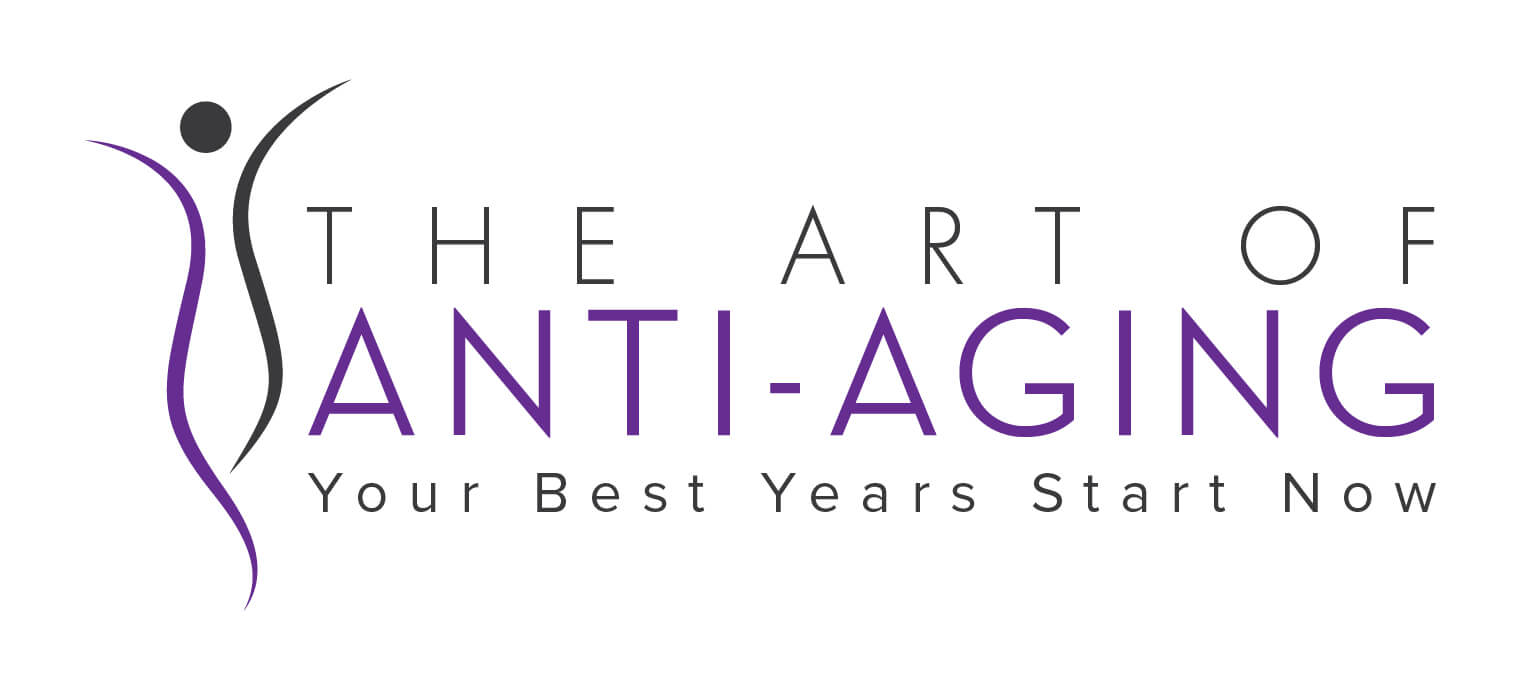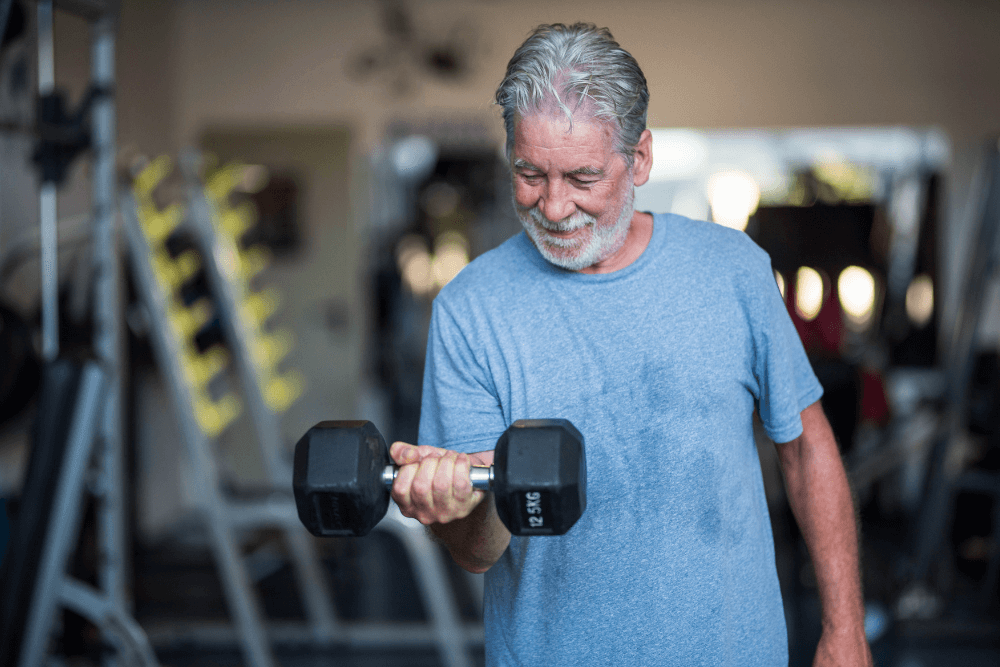Have you ever felt like you’re putting in the effort at the gym, but just not seeing the results you want? You might be surprised to learn that true strength goes beyond just lifting heavier weights.
Strength training is about developing optimal neurological connections with your muscles to enhance balance, coordination, and mobility. As you age, these connections can weaken, leading to decreased strength, increased risk of falls, and a decline in overall well-being.
Let’s explore the importance of functional strength training, especially for individuals over the age of 50, and provide insights into achieving health sustainably.
The Neurological Foundations of Strength
 The key to strength development involves optimizing the neurological pathways between your brain and muscles. Imagine your brain as the conductor of an orchestra, sending signals through your nerves (like electrical wires) to your muscles (the instruments). Strong, efficient “wiring” is essential for flawless performance.
The key to strength development involves optimizing the neurological pathways between your brain and muscles. Imagine your brain as the conductor of an orchestra, sending signals through your nerves (like electrical wires) to your muscles (the instruments). Strong, efficient “wiring” is essential for flawless performance.
Believe it or not, early strength gains often come from improved neural activation, not just bulking up your muscles.
Think about lifting a 30-pound weight versus a 5-pound weight. It’s not just about using all your muscles for the heavier weight – it’s about recruiting more muscle fibers to tackle the challenge. This is because muscles recruit or contract to produce force within what’s called an all-or-nothing principle.
The secret to anti-aging fitness? Engaging as many muscle fibers as possible to become strong and metabolically active. This combats aging and keeps you moving with ease. But how do you achieve this without stressing your body and causing more harm than good? The science behind this is what unlocks the door to maintaining peak fitness well into your golden years!
Beyond the Myth: Strength Training Isn’t Just About Pushing Harder

A common misconception is that strength simply involves applying more effort to the muscles. But this approach can lead to muscle weakness and imbalances, especially as you age.
In fact, improper training methods are a leading cause of excessive force and injury.
This is particularly concerning if you’re over 50, as the body becomes more susceptible to wear and tear. Physical therapists see countless patients suffering from exercise-induced issues like joint pain and inflammation – all stemming from improper training.
But research shows that focusing on balance training and low-impact activities are most effective in reducing these injuries.
The Art of Biomechanical Optimization
Developing strength, particularly after 50, requires a focus on biomechanical optimization – a term pioneered by The Fitness Doctor. This means training your body in a way that enhances natural movement patterns and minimizes injury risk. Here are the key aspects:
- Prime Movers: These are the powerhouse muscles responsible for major movements.
- Stabilizers: These muscles support and maintain proper posture and alignment.
- Antagonists: These muscles act as the brakes, counterbalancing the prime movers for smooth, controlled movements.
For example, during a push-up, it’s not just about the chest and triceps. You also need to engage your back muscles to prevent your core from collapsing and ensure your stabilizers are firing for proper form.
A Holistic Approach to Strength Training
To cultivate true functional strength, we need to embrace a holistic training approach that harmonizes all your muscle groups. This involves:
- Optimal Mind-Body Connections: Strengthening the somatosensory system encompasses your perception, emotions, body control, and even how you see yourself. Many people develop pain from strength training because they’re driven by negative emotions and a desire to “fix” their bodies. This creates tension and dysfunction.
- Targeted Muscle Activation: Making sure exercises effectively engage both prime movers and stabilizers.
- Balanced Training: Avoiding overdeveloped muscles while neglecting others, which can lead to imbalances and dysfunction.
- Functional Movements: Focusing on exercises that mimic everyday activities to improve overall functional capacity.
Benefits Beyond Strength
Strength training over 50 offers a range of benefits that extend far beyond simply building muscle mass and strength. Regularly engaging in proper strength exercises acts as a powerful investment in your overall health and well-being.
Improve Bone Density

As you age, bone density naturally starts to decline, increasing the risk of osteoporosis. Strength training, particularly weight-bearing exercises like squats, lunges, and push-ups, acts as a potent countermeasure. These exercises stimulate the growth of new bone tissue, making your bones denser and more resistant to fractures. This translates to a stronger foundation for your body, allowing you to maintain independence and engage in activities you enjoy for longer.
Enhance Heart Health
Your heart is a tireless muscle, and strength training helps it perform even better. During strength training, your muscles require more oxygen, prompting your heart to pump more blood. This improved efficiency translates to a stronger heart, lower blood pressure, and a reduced risk of heart disease – a leading cause of death. You’ll experience better stamina for everyday activities, allowing you to tackle tasks with more ease and enjoy a more active lifestyle.
Boost Metabolism
 Muscle mass plays a critical role in metabolism, the process by which your body converts food into energy. As you age, muscle mass naturally tends to decrease, leading to a slower metabolism and potential weight gain. Strength training helps combat this by building and maintaining muscle mass. More muscle tissue translates to a higher metabolic rate, meaning your body burns more calories even at rest. This not only aids in weight management but also helps regulate blood sugar levels.
Muscle mass plays a critical role in metabolism, the process by which your body converts food into energy. As you age, muscle mass naturally tends to decrease, leading to a slower metabolism and potential weight gain. Strength training helps combat this by building and maintaining muscle mass. More muscle tissue translates to a higher metabolic rate, meaning your body burns more calories even at rest. This not only aids in weight management but also helps regulate blood sugar levels.
Combat Cellular Aging
Strength training isn’t just about physical benefits; it can also have a positive impact on cellular health. Strength training has been shown to signal cells to perform optimally, potentially aiding in the fight against cancer cells and overall cellular function. By signaling your cells to perform at their best, strength training contributes to a healthier feeling you at the cellular level.
Rewind the Aging Clock
Strength training can also have a profound impact on your mental and emotional well-being. Engaging in regular exercise releases endorphins, natural mood elevators that combat stress and anxiety. The sense of accomplishment you experience from achieving fitness goals can further boost your confidence and self-esteem. You’ll not only look and feel younger, but you’ll move, think, and act with newfound confidence.
Learn The Best Exercises if You are 50+ (FREE!)
As you now understand, if you are in your 50s, 60s, 70s, or beyond, it is essential to exercise properly — to build and maintain your total body functionality now and very late into your life. Of course, injuries, joint issues, and more are often the result if we don’t take this approach.
That’s why you will love these completely free sessions providing you top “anti-aging movements” for specific sections of the body — your feet / ankles / knees… hips and pelvis… lower and upper back.. your shoulders and your neck.
Robbie Stahl is today’s leading expert in proper anti-aging fitness. He is the founder of The Fitness Doctor, the only fitness company in the world that has a mind-body fitness training system designed for adults over 50.
And Robbie will be your guide for this free training event!
By focusing on the quality of movements, ensuring balanced muscle development, and prioritizing functional exercises that train both your mind and body, you can enhance your strength, reduce the risk of injury, and enjoy a higher quality of life well into your golden years.




We have come a long way since my cousin, Dr. Miriam Nelson, did her research at Tufts U and published her first book. Back then some Doctors said older women shouldn’t be lifting weights. Thank you for this important information.
I have your cousin’s book, “Strong Women Stay Young.”
Great book! Taught me how to lift weights with progressive exercises.
Great article👍I have lifted weights since a teenager. I love it!! The way it makes my body feel, the strength of my muscles and all the health and mental health benefits. We now know the anti-aging benefits. I wish everyone took advantage of weightlifting especially as we age with the proper alignment and form which is critical for remaining safe🤗👏👏
I cycle 14 miles a day
Do 8 Brocades and 21 5 Tibetans plus 22 push ups
Not bad for a 65 yrs old guy with MS
Thanks for this article! It reinforces what my trainer has me working on.
love this information! I’m a fitness expert having taught all forms of group fitness and private Pilates clients for over 40 years. I’m always reading and learning!
Helpful! Thanks.
I am 63 yr old female and I do CrossFit I never exercised until into my late 50’s I have learned it is never too late to start. I look and feel younger my trainer has taught me any movement can be modified to suit your level of activity the hardest part is just showing up to play… start with the video
The article gives you alot info of why you exercise, and why it is so important. I loved reading the article.
I appreciate this article and the clear way it discusses all the benefits!
Very helpful! Thanks!
Excellent on all sides!
love to try the same
I texted your dad joke to my trainer.
He’s mid 20’s, I’m 80…
Thanks! 😂
Thank you for this article. It is helpful!
Great article thankd so much for sharing and free you are a blessing
Interesting article. Strength is important as muscle declines from age 40 onwards.
At 73 I am recovering from recent heart failure, and , I think progressing nicely, but would like to get back to doing as much of what I did previously: Tai-Chi and Capoeira as possible.
I suspect I will have to restart at a lower level and am picking up hints from anywhere on how to rebuild my stamina and strength without going anywhere near a gym or overdoing things.
In a week or so I will restart some (light) weights at home as my upper body feels weaker than it used to be so I am saving this article as a reminder.
Thank you for this comprehensive article. I am involved with strength training, but you gave me many reasons to continue and, in fact, expand it. As our population grows older, many people need to know about this to improve their quality of life. You are doing a great public service.
Hi I’m 89 and do training with resistance bands 3 times a week.
I too stared lifting weights when I was in my early teens.
Thank you for your article and all the comments posted
Excellent article Brian. l am an avid exerciser over 50. I find this article explains every thing in a simple manner and is very motivating to continue with my exercise program. Thanks for reminding me why I do it.